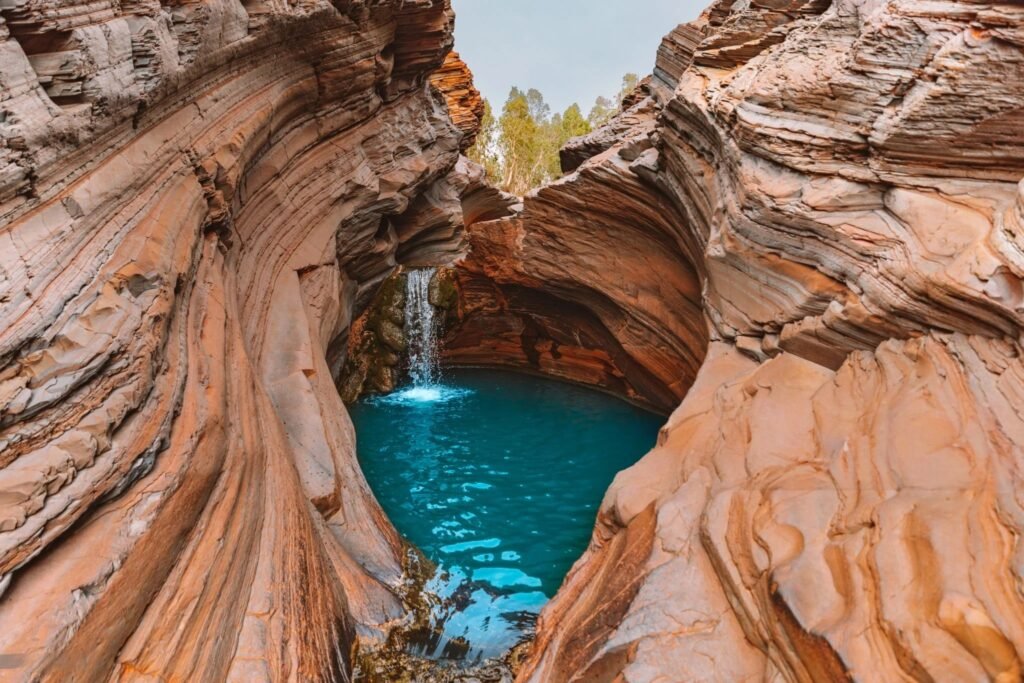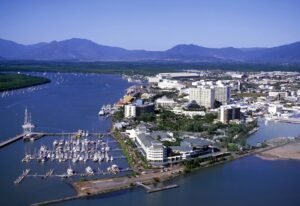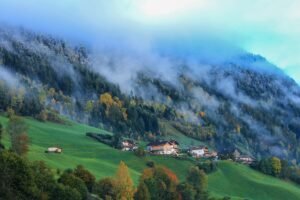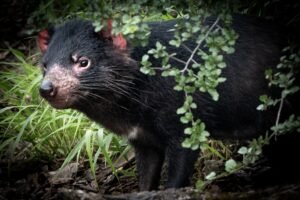10 must-see Iconic Landscapes Wonders of Australia | discover the top picks

Table of Contents
World travelers are lured by very distinctive sightseeing locales and interesting experiences in various realms. The Iconic Landscapes Wonders of Australia showcase nature’s finest artistry, from the rugged Twelve Apostles to the vast Outback.
The grandeur of the Grand Canyon rocks transmits an artistic perspective of nature, while the tranquility of the charming Gulf of Bali remains intangible. Meanwhile, the rolling countryside and beaches along Tuscany’s southwestern shorelines captivate visitors.
For the adventurous traveler, the Iconic Landscapes Wonders of Australia provide the perfect backdrop for unforgettable memories and stunning photography. These magical spots offer a chance to truly marvel at the cosmos of elemental wonders beyond a one-dimensional vision. Exploring the Iconic Landscapes Wonders of Australia is the ultimate way to experience the planet’s breathtaking diversity.
Key Takeaways
- The Iconic Landscapes Wonders of Australia include stunning sites like the Twelve Apostles, Uluru, and the Great Barrier Reef.
- These landscapes showcase Australia’s diverse natural beauty, from rugged coastlines to vast deserts and lush rainforests.
- They offer incredible opportunities for adventure, including hiking, diving, scenic drives, and wildlife encounters.
- Many of these wonders hold cultural and historical significance, especially for Indigenous Australians.
- Visiting these landscapes provides a once-in-a-lifetime experience, perfect for photography, exploration, and immersing in nature.
The Twelve Apostles
The Twelve Apostles are one of Australia’s most iconic natural landmarks. Situated near the Great Ocean Road in Victoria, these dramatic limestone stacks ascending majestically from the Southern Ocean attract millions of visitors per year.
Waves from the Antarctic beat against Australia’s southern shores year by year, century by century. This coastline is retreating, leaving behind relics of its past frontiers. West of Melbourne, limestone stacks called the Twelve Apostles rise 150 feet above the waves. New stacks are constantly being formed as waves cut into the headlands on both sides. Harder rocks, more resistant to erosion, survive longer. The different layers of limestone were laid down as sediment on the floor of an ancient and long-vanished sea. The ocean is now reclaiming the land that it once helped to create.
Karijini National Park
The vastness of the place—the landscape, being up in the highest area in Western Australia—creates these vast areas of mountains, but there are also beautiful trees and vegetation around us. It’s arid, but it still has plenty of vegetation with a whole array of different plants. Also, the ongoing Indigenous connection to this country is very important, where the traditional owners are still actively looking after the land. The law remains strong.
I think it’s a whole range of things that make this country really special. The main attraction here is the gorges and the variety of different gorges we have. There are places that are simply stunning, such as Fern Pool and Fortescue Falls, where you’ll find shady fig trees and fern-lined waterholes with little waterfalls tumbling in. It’s just the most picturesque kind of place. On the other hand, there’s the more adventurous side of the gorges, like Hancock Gorge.
Hancock Gorge is carved out of sheer rock; it’s narrow, and the colors of the rocks are stunning. Walking down through the gorge truly feels like an adventure. I think that’s the main attraction. However, when people arrive, they’re also amazed at the vegetation and how beautiful the whole landscape is. That’s what brings people back, I guess.
The local Banjima people have a saying: “Go with a clear, open, and accepting spirit, and the country will do you no harm.
Flinders Ranges
The very essence of Australia—this is nature at its most awe-inspiring. It’s a place of impossibly blue skies, immense landscapes, and generous, open-hearted people. The Flinders Ranges and Outback begin just a three-hour drive north of Adelaide, making it the most accessible part of the outback in the nation. There are a range of excellent tools available for those who want a guide to this area of the state.
This is where the water ends and the adventure begins, in a vast and startlingly beautiful landscape that covers more than 80% of the state. It includes amazing natural formations such as Wilpena Pound and the pink parallel dunes of the Simpson Desert.
The weather here is hot, with average maximum summer temperatures in towns such as Coober Pedy reaching 40 degrees Celsius. It does cool down, though; Coober Pedy’s average maximum winter temperature is 19 degrees Celsius. The Flinders Ranges has been named one of Australia’s outstanding national landscapes, recognized as an emotionally uplifting destination where adventure awaits.
Spirituality and tranquility coexist here, making it well worth exploring. The area offers accommodation options ranging from budget-friendly to luxurious. You can try your hand at driving on a cattle station, take a trek on a camel, and taste Flinders’ barrel food at the Prairie, an isolated hotel with kangaroo steaks and emu eggs on the menu.
To the west lies Coober Pedy, the world’s opal mining capital. This is a town like no other, where you can stay in an underground hotel, go mining for opals, and even play golf on a course without a single blade of grass. The friendly locals are always ready to share tips for an unforgettable adventure in the outback.
The Aboriginal people of the region take pride in their traditions and offer visitors the chance to learn about their culture through a range of tours and experiences. For an exhilarating, authentic holiday, let the uplifting Flinders Ranges and Outback awaken your spirit of adventure and invigorate your soul.
The Pinnacles Desert
They told the young men not to enter the pinnacles. One day, I guess some young men entered the pinnacles and sunk into the desert sands. The pinnacles are said to be the fingertips of the young men who didn’t listen to their elders.
An interesting thing about the pinnacles is that they tell a story about what the climate was doing over the last 500,000 years. If you can imagine, massive sand dunes built up during interglacial windy periods, and they were rich in calcium carbonate, which is just broken-down marine life. Between interglacial and glacial periods, there was heavy rainfall. That rainfall dissolved the calcium carbonate in the sand dunes and allowed it to deposit at the bottom of the dunes as a layer of limestone.
Limestone is just a sedimentary rock that builds up layer upon layer. Some pinnacles are the remains of that original limestone bedding, so you can see the limestone layers in them. For other pinnacles, it’s not as easy to explain.
Whenever you had a bed of limestone and water pooled on the surface, that pooled water created a tube. That tube was secondarily filled with sediment and pebbles. There were plants growing on the surface at the time, so what filled the tube included roots, sediment, and pebbles. Over time, it cemented together, and what was once around that tube eroded away.
Wave Rock
Entry to Wave Rock is charged, and you stop at the little pay station here. It accepts coins or credit cards. This is the world-famous Wave Rock. It’s not the only wave formation found on granite outcrops in Western Australia—there are quite a few—but this is probably the largest and longest.
It’s believed that these formations were created by general erosion while the rock was still mostly covered with soil. At one stage, the soil would have reached up to the lip you can see at the top. The erosion that shaped the wave formation likely happened underground.
Here, you can get an idea of how the wall along the top is constructed. To this day, it still funnels water down into the dam. At this time of year, with all the water on the rock, little ecosystems develop. Many small invertebrates live in the ponds up here for a short time each year when it’s nice and wet. For the rest of the year, they exist as eggs buried in the mud or earth at the bottom of the ponds.
There’s been so much rain here recently that water is still flowing down the rock. While the wave formation is, of course, the main attraction, if you make your way to the top and look around, you’ll find beautiful, secluded spots among the boulders. These places are quite special in their own right.
Tasmanian Wilderness World Heritage Area
A marvel of nature, the Tasmanian wilderness. The first gigantic supercontinent on Earth is believed to have started breaking apart about 180 million years ago. Australasia was created, and the island of Tasmania gradually separated from the mainland. Glaciers carved out a starkly contrasting and rugged terrain. Primeval forests cover much of the island and still retain characteristics of a bygone age.
This is a spiny anteater. It uses its long snout to catch ants. The creature lays eggs but also breastfeeds its babies. Like the spiny anteater, the platypus is also a mammal.
Night is approaching in the forest. This is a common wombat. Wombats are marsupials and carry their young in their abdominal pouch, just like kangaroos. Common wombats keep their babies in their pouch for six months. There are more than 15 species of marsupials on the island. The Tasmanian devil is the only carnivorous one. The name “devil” was given because the animal eats dead meat, but the fact is they’re just too slow to catch living animals.
This is the Red Sea—an exceptional marine. The landscape of deep-sea creatures, normally found at depths in excess of 200 meters, can be found here in shallow waters just 5 meters deep. What makes this water red is a compound called tannin. Tannin from plants surrounding the bay has been released into the water. The red pigment blocks out sunlight, keeping the shallow water as dark as the deep ocean.
This is an elephant fish, a very rare abyssal fish also found here. This fish, walking on the sea floor, belongs to the sea robin family. Studies have only recently revealed that this species of deep-sea fish is living here.
The Tasmanian wilderness—a mysterious but astonishing world of nature that never ceases to amaze.
Lake Eyre
Big last year, even bigger now. Outback rivers are again carrying a huge volume of water to Lake Eyre, the vast salt pan in the heart of the continent that seldom sees a drop. Now, the flooding has triggered another explosion in plant and animal life in the desert.
From Lake Eyre, Paul Loia reports: They’re back. The pelicans have returned to Central Australia to breed for the second year in a row, following the rivers to Lake Eyre. On islands in the middle of the huge lake, the incongruous sight of seagulls. They’ve made the long journey from the coast to begin nesting—an unmistakable sign that this is a big flood year.
“I mean, this is the driest state and the driest continent on Earth, apart from Antarctica. And there’s more water in northeast South Australia than you can poke a stick at.”
The difference this time is the flow making its way down the Coopers Creek. It’s already crossed the Birdsville Track and will soon start running into Lake Eyre from the east—the first time that’s happened in 20 years. To the north, the Wan Creek continues to funnel water.
Into Lake Eyre, from a vast network of streams and channels, they run through massive floodplains which have been turned into wetlands. The explosion of life here immediately produces a tremendous response in terms of vegetation, invertebrates, fish, turtles, and water birds. Last year’s flood provided a crucial boost to bird breeding, and this year is a very welcome bonus.
These are the real opportunities for the birds to bounce back after a really hard time. This massive bird breeding event again raises one of the great unanswered questions of nature: how do the birds know that the big inland rivers are flowing again to the arid heart of the continent?
Scientists are still only dealing in theories. When this rare event happens on such a grand scale, nature never fails to amaze.
Horizontal Falls
the famous Horizontal Waterfalls, an extraordinary natural wonder where two large bays empty and fill through a pair of narrow gorges in the Kimberley escarpment country. With up to a 10-metre rise and fall in the tide, the power of the water has to be seen to be believed. At peak flow on the mid-tide, the water runs at around 10 to 15 knots, forming some pretty hair-raising rapids with up-currents and whirlpools everywhere.
“There she is, mate. Yeah, not really sure we should be taking that bike through there. What do you reckon? What, go through there in a rubber dinghy? That’s very thick for the rubber dinghy. Clay instead? I’m gonna hit it—go straight down the guts.
the tourist boats that run these rapids are purpose-built with far more buoyancy. The biggest difference is two 300-horsepower motors. With less than half the horsepower, we’ve got to be extra careful because, with all this white water, the motor really struggles for thrust.
The narrow gap is deadly, and even the tour boats can get into trouble here. Over the years, there have been plenty of accidents, and lives have been lost. These boats don’t go through when the water is in peak flow, and given that it’s the biggest tide of the month, we’ll show some uncharacteristic caution.
Just sitting here has got my adrenaline pumping off the charts. We’re in the center bay, and we’ve got to get back out again. Little do we know what lies ahead. Going in—that’s the easy part. It’s not too bad. But going back out—that’s where she really stands on her head. The problem is you’ve got this massive volume of water trying to force (03:20) its way through. The water comes up, pushes up, and spins around like this. If we get hit from the side, it could tip us to the outside. And if we cut into that water—boom—it’s all over.”
“The force of the water will roll us, and that’ll be the end of it. We’ll be swimming. We don’t want to be swimming, mate. But if you pick your course and stick to the track, it’s doable. I’m confident it’s doable. That’s the only way we’re going to get back through it. You’ve got to hold the gas on.”
Cape Le Grand National Park
Cape Le Grand National Park, located in Esperance, Western Australia, is breathtaking, virgin coastal scenery abounding with paradise beaches, rugged granite outcrops, and a great variety of wildlife. The park is famed for Lucky Bay, with its velvety white sand and friendly kangaroos that sun themselves on the beach. Hiking trails include Frenchman Peak, whereby lucky hikers can view the whole coast, or enjoying exploring the clear-blue-filled water for a swim, snorkel, or fishing.
From sand to heathlands, from rocky outcrops to myriad more terrains, the park is one of the manifestations of Australian natural beauty. Those who love being outdoors and into nature should make a visit to Cape Le Grand, as whether you sleep dreaming under a star-laden sky or drift in the serenity of its secluded coves, Cape is a must-visit for those seeking Mother Nature’s kiss.
Have you been doing any planning for Esperance, your big lap of Australia, or any Australian travel? You may have come across Lucky Bay—it’s a very famous beach in Australia, and for good reason.
You can drive onto the beach, but we stayed at the campground, which was really handy since we could just walk down. The beach was absolutely beautiful.
This beach is well-known for kangaroos occasionally being on the sand. Unfortunately, we didn’t see any kangaroos on the beach, though there were quite a few kangaroos around the area.
MacDonnell Ranges
What’s special to me about Central Australia is the energy in the landscape. It’s just so beautiful—beyond description. There are mountains, gorges, riverbeds, and an abundance of flora and birdlife that you wouldn’t imagine exist out here. I think you have to come and see it to believe it with your own eyes.
The Classic Larapinta Trek in Comfort is an incredible six-day walk that winds through the West MacDonnell Ranges. Some of the highlights of the trek include Mt Sonder and experiencing a desert sunrise from the top of a mountain—it’s a once-in-a-lifetime experience. At Stanley Chasm, we also get to learn a lot about culture directly from the Arrernte people.
To anyone thinking about coming and doing the Classic Larapinta, I tell them to just book it. It’s an amazing experience and caters to everyone, so there’s no need to feel nervous about it. We’ll make sure you have the best time.
Iconic landscapes captivate with their natural beauty, cultural significance, and timeless allure. From breathtaking coastlines to majestic mountains, these destinations inspire awe and provide unforgettable experiences. Exploring iconic landscapes allows us to connect with nature, appreciate the world’s wonders, and create memories that last a lifetime.
Thank you, and that wraps up our Iconic Landscapes Wonders of Australia. Do you agree with the places we chose, or is there somewhere you visited that you feel should be on the list? leave us a comment.
You can find me on Instagram: @dreamytravelersofficial/.
This Blog is Iconic Landscapes Wonders of Australia. if know travel Italy other Cities and know anything please visit. Read More
frequently asked.
What are the Iconic Landscapes Wonders of Australia?
The Iconic Landscapes Wonders of Australia include breathtaking natural sites like the Twelve Apostles, Uluru, the Great Barrier Reef, and the Blue Mountains.
Why are these landscapes considered iconic?
These landscapes are unique due to their geological formations, rich biodiversity, and cultural significance, making them must-visit destinations for travelers.
When is the best time to visit these wonders?
The best time varies by location. Coastal sites like the Great Barrier Reef are best visited from May to October, while desert landscapes like Uluru are ideal during cooler months (April to September).
How can travelers best experience the Iconic Landscapes Wonders of Australia?
Travelers can explore these wonders through scenic drives, guided tours, hiking, diving, and aerial experiences such as helicopter rides.
Are these landscapes suitable for adventure travelers?
Absolutely! From surfing along the Great Ocean Road to hiking in the Blue Mountains and diving in the Great Barrier Reef, adventure seekers will find plenty to explore.








